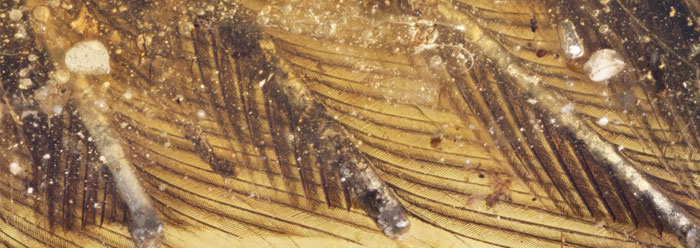Researchers have described remarkably well-preserved tissue discovered inside a salamander fossil. The fully intact muscle tissues also had blood-filled vessels, and they had not been mineralized like most fossils. This “fresh meat” find is depicted as the “highest quality soft tissue preservation ever documented in the fossil record.”1 But given its assigned age of 18 million years old, it shouldn’t be there at all.
The fossil had been stored in Madrid’s Museo Nacional de Ciencias Naturales. According to the researchers’ report in Proceedings of the Royal Society B, it was “recovered during commercial mining of the oil shales at the beginning of the twentieth century and does not appear to have been treated or prepared prior to our analysis.”2
Organic materials such as muscle tissue decay in days or hours under ambient conditions, as anyone can observe by leaving a piece of steak out in the open. The fact that this tissue is still present and so well-preserved is strong evidence that this salamander died much more recently than 18 million years ago. The researchers stated that this sample provided “to our knowledge, the first record of organically preserved musculature including its sedimentological context.”2 It was found in sedimentary rock interpreted as having come from an ancient lake bed.
“The detail revealed by TEM [transmission electron microscopy] imaging unequivocally identifies the organic remains as fossilized musculature from the salamander itself.”2 Its body was outlined with a carbon tracing, indicating that it had been heated. The researchers noticed that some of the cracks between the fiber bundles were wider than those of modern specimens. These cracks most likely formed as the salamander flesh dried out, possibly from this heating event. The study also noted that the tissue preservation occurred in “the absence of protective encapsulating agents such as bone” or amber.2
On the basis of this data, the researchers predicted that more fossilized soft tissues will be discovered, especially in lake bed deposits such as this one and those of the Messel Oil Shale deposits in Germany.3 But this prediction fails to follow from the standard evolutionary assumption of deep time, since the preserved organic matter stands in contradiction to its assumed age. Fresh meat―which these authors described as “extremely decay prone”―falsifies the millions-of-years age assigned to this rock formation in Spain.
It is possible that this salamander was deposited, alongside “abundant exceptionally preserved plants and insects,”2 from a volcanic-related catastrophe that occurred near Castellon in northeast Spain and formed the Ribesalbes Lagerstatte deposit where the salamander was found. Like the Messel Shales in Germany and the Cerrejón Formation in Colombia,4 both of which also contain exquisitely preserved fossils, this geologic formation appears to have been the result of a local, post-Flood catastrophic event.
References
- Ancient muscle tissue extracted from 18 million year old fossil. University College Dublin press release, November 5, 2009.
- McNamara, M., et al. Organic preservation of fossil musculature with ultracellular detail. Proceedings of the Royal Society B. Published online before print October 14, 2009.
- These shales have recently yielded fossils that look fresh and young, including a whole extinct lemur-like primate and iridescent bird feathers. See Thomas, B. 2009. The Ida Fossil: A Clever Campaign for a Lackluster ‘Link.’ Acts & Facts. 38 (7): 17, and Thomas, B. Fresh Fossil Feather Nanostructures. ICR News. Posted on icr.org September 16, 2009, accessed December 2, 2009.
- Thomas, B. New Fossil Cache Shows Plants Haven’t Changed. ICR News. Posted on icr.org October 28, 2009, accessed December 2, 2009.
Image credit: The Royal Society (Photo used here pursuant to 17 U.S.C. § 107)
* Mr. Thomas is Science Writer at the Institute for Creation Research.
Article posted on December 11, 2009.
























